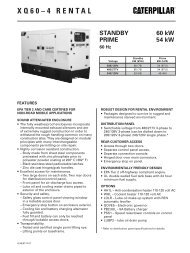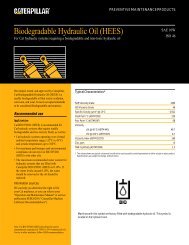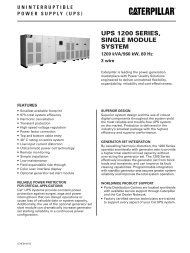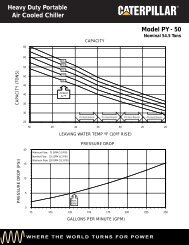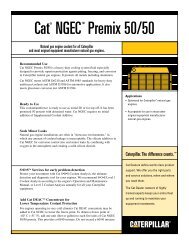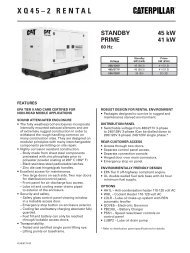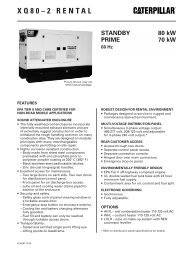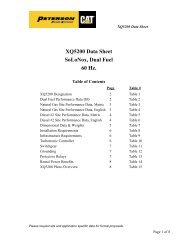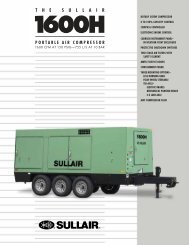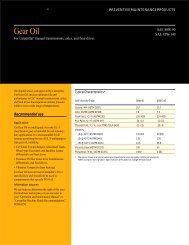Understanding SOS Service Tests - PEHP7076-02
Understanding SOS Service Tests - PEHP7076-02
Understanding SOS Service Tests - PEHP7076-02
- No tags were found...
You also want an ePaper? Increase the reach of your titles
YUMPU automatically turns print PDFs into web optimized ePapers that Google loves.
S·O·S Oil Cleanliness AnalysisClean oil keeps equipmentrunning rightCounting the tiny particles in an oil sampleidentifies harmful contaminants that shortencomponent life. It can also pinpoint largerparticles that signal imminent equipmentfailure. Our S·O·S <strong>Service</strong>s programfinds these particles through a combinationof tests that includes Particle Count.Fighting an unseen enemyEven particles far too small to see can causedamage. In fact, oil that looks clean maycontain particles that cause abrasive wear.Particle contamination:• Accelerates component wear• Reduces system efficiency• Diminishes equipment performanceLearn About ISO Cleanliness CodesThe International Standards Organization(ISO) has developed a code system forconvenience in discussing the cleanlinesslevel of a fluid. The system reports onparticles at two important size catagories(>5 micron and >15 micron). You may wishto learn more about this system of reportingoil cleanliness to better manage the lifeof your hydraulic and transmissioncomponents. If you are interested askus for Form No. PEJT5<strong>02</strong>5 ReportingParticle Count by ISO Code.The technology behindParticle CountS·O·S labs use a technique calledlight extinction to “count” theparticles. The sample is passedthrough a beam from a speciallight source. When a particle inthe oil passes through the beam,a sensor monitors changes in thelight, counts the particles andrecords their sizes. This testdetects particle contaminantsthat can lead to acceleratedwear and other costly problems.Going beyond WearRate AnalysisParticle Count, which is used fortransmission and hydraulic system oilsamples, is one of two tests in the S·O·S<strong>Service</strong>s program that look at particles.The other is Wear Rate Analysis, whichuses spectrometry to identify metal particlesfrom 8 to 10 microns in size. UnlikeWear Rate Analysis, Particle Count detectsmetallic and non-metallic particles from2 to 100 microns. However, ParticleCount only reports the size and numberof particles, not their composition.Particle Count is the most efficient wayto identify non-metallic particles in oil.These may include silicon from dirt orsynthetic friction materials that signaldeterioration in transmissions, steeringclutches and brakes. Gasket, seal, filterand hose material can also be detected.Another benefit of Particle Count is itsability to detect particles larger than 10microns that cannot be seen by WearRate Analysis or any other oil analysistest. These larger particles are a signof imminent failure if the problem isnot corrected.Particle Count is only used for non-engineoil samples because engine oil contains sootthat cannot be distinguished from metalparticles or debris.




